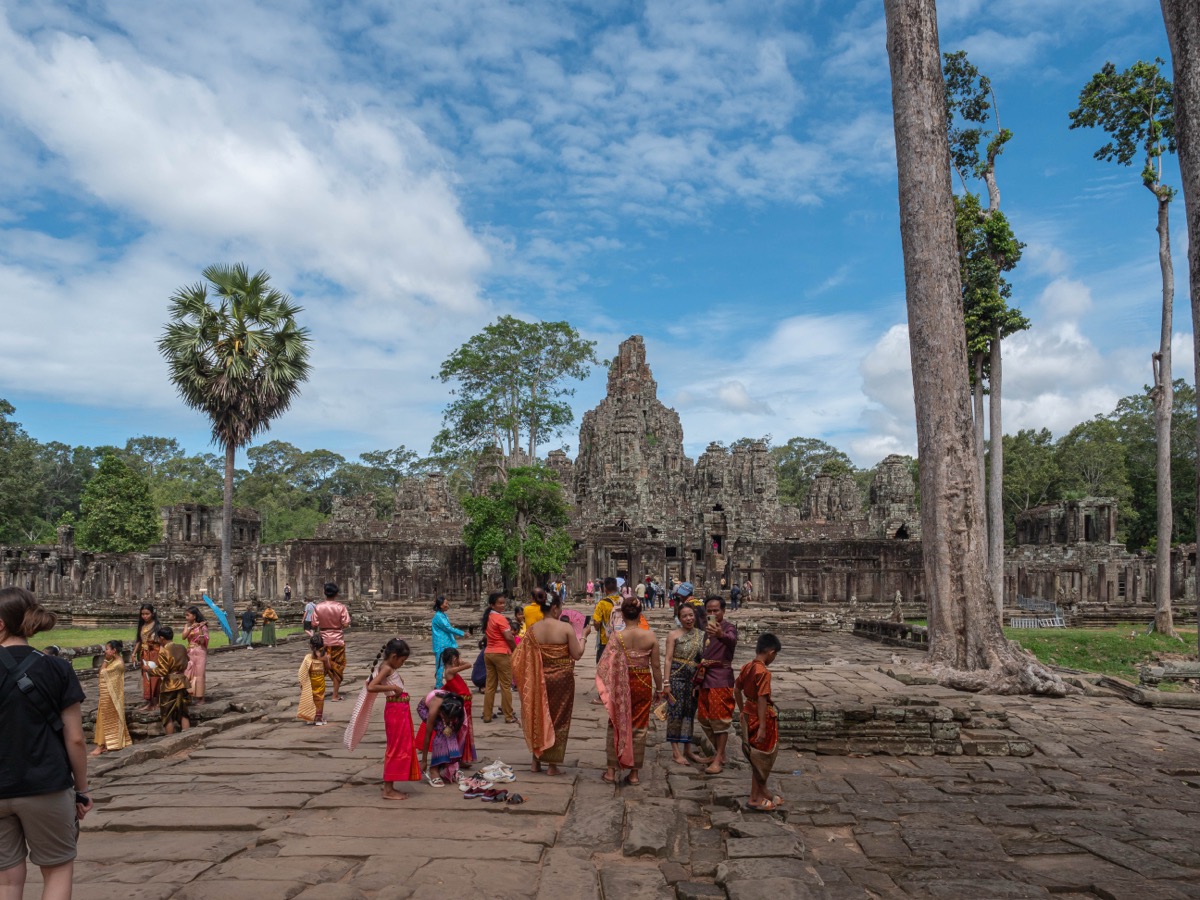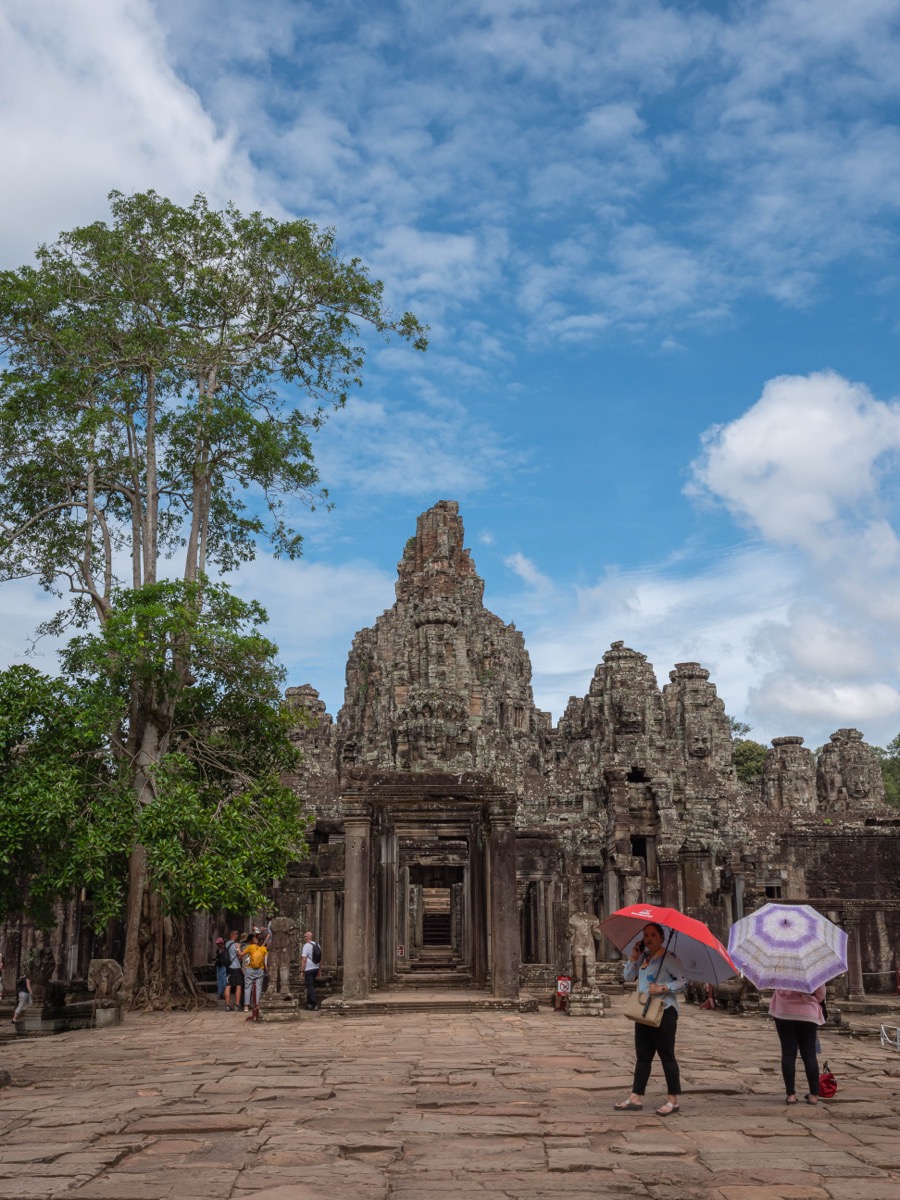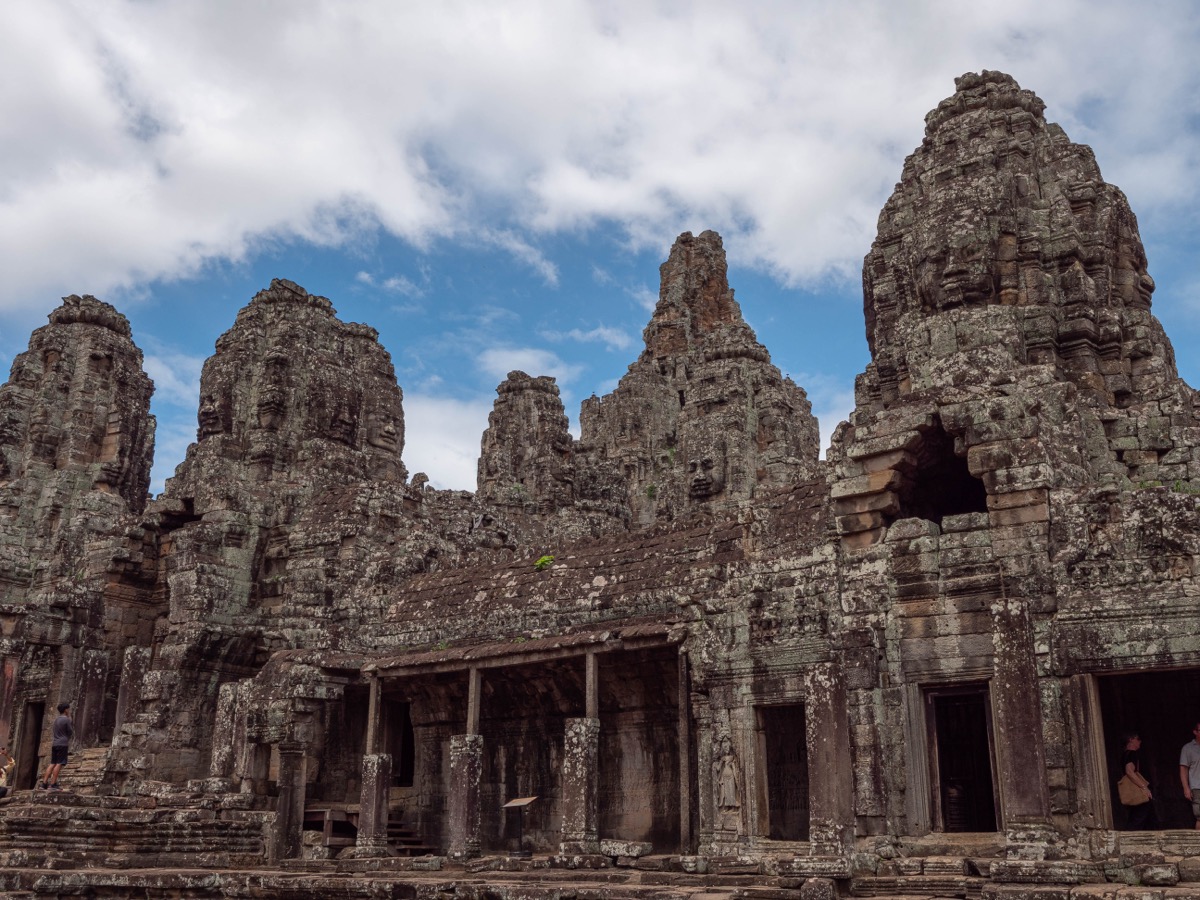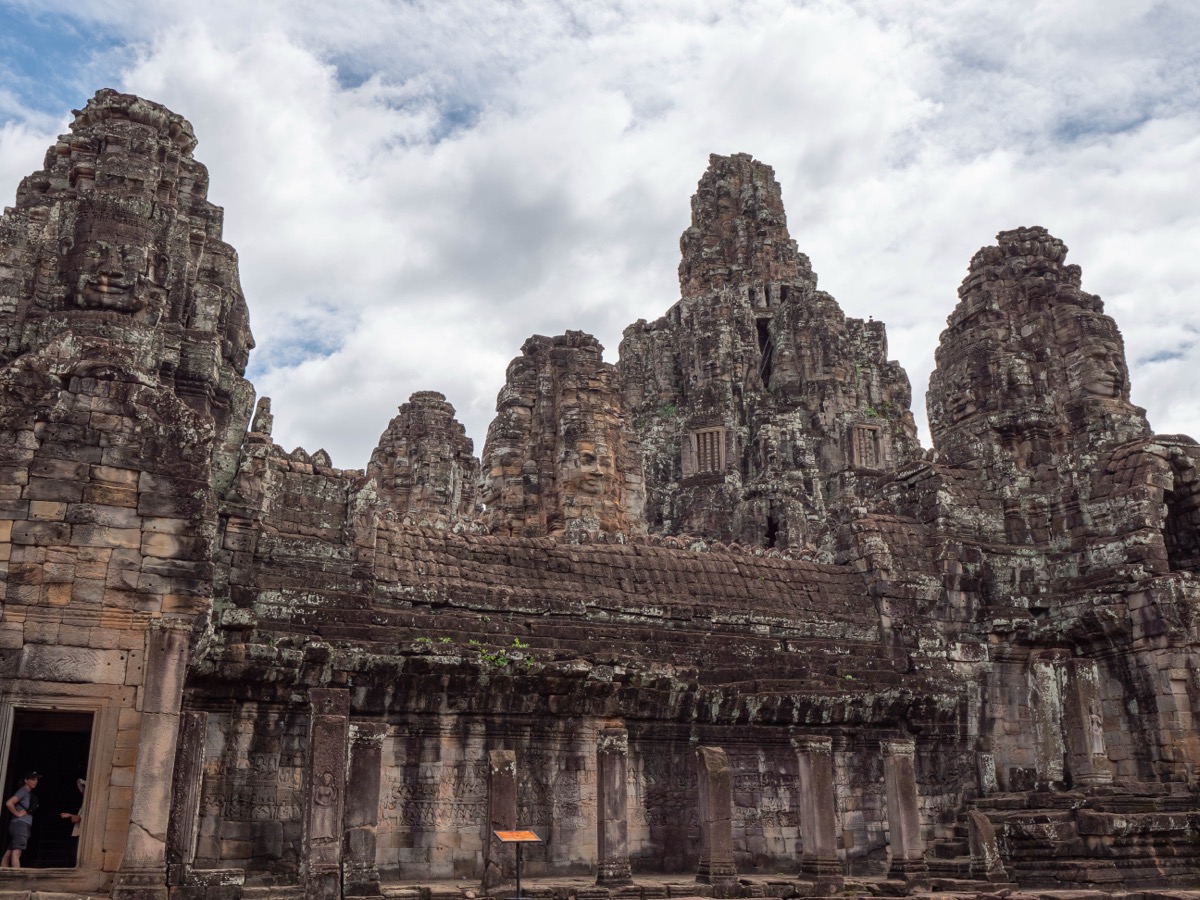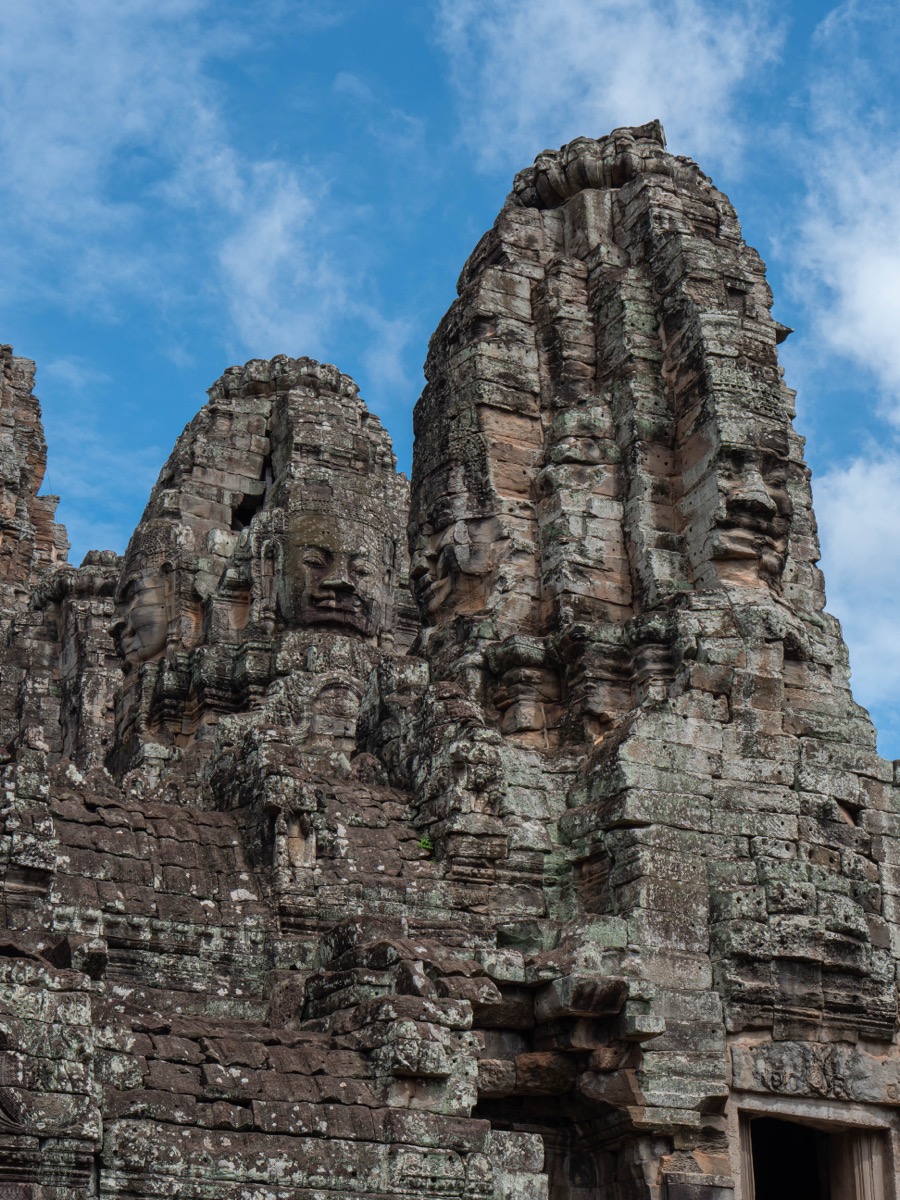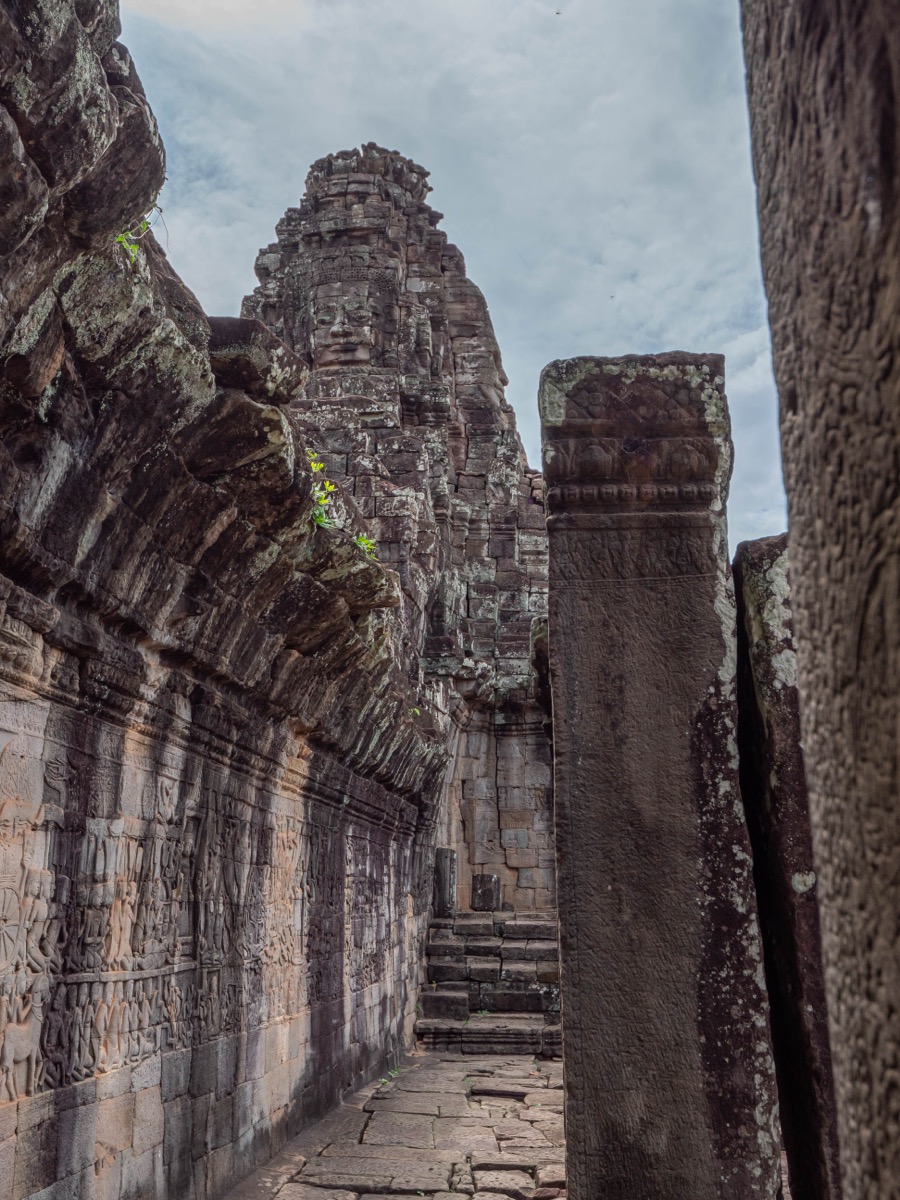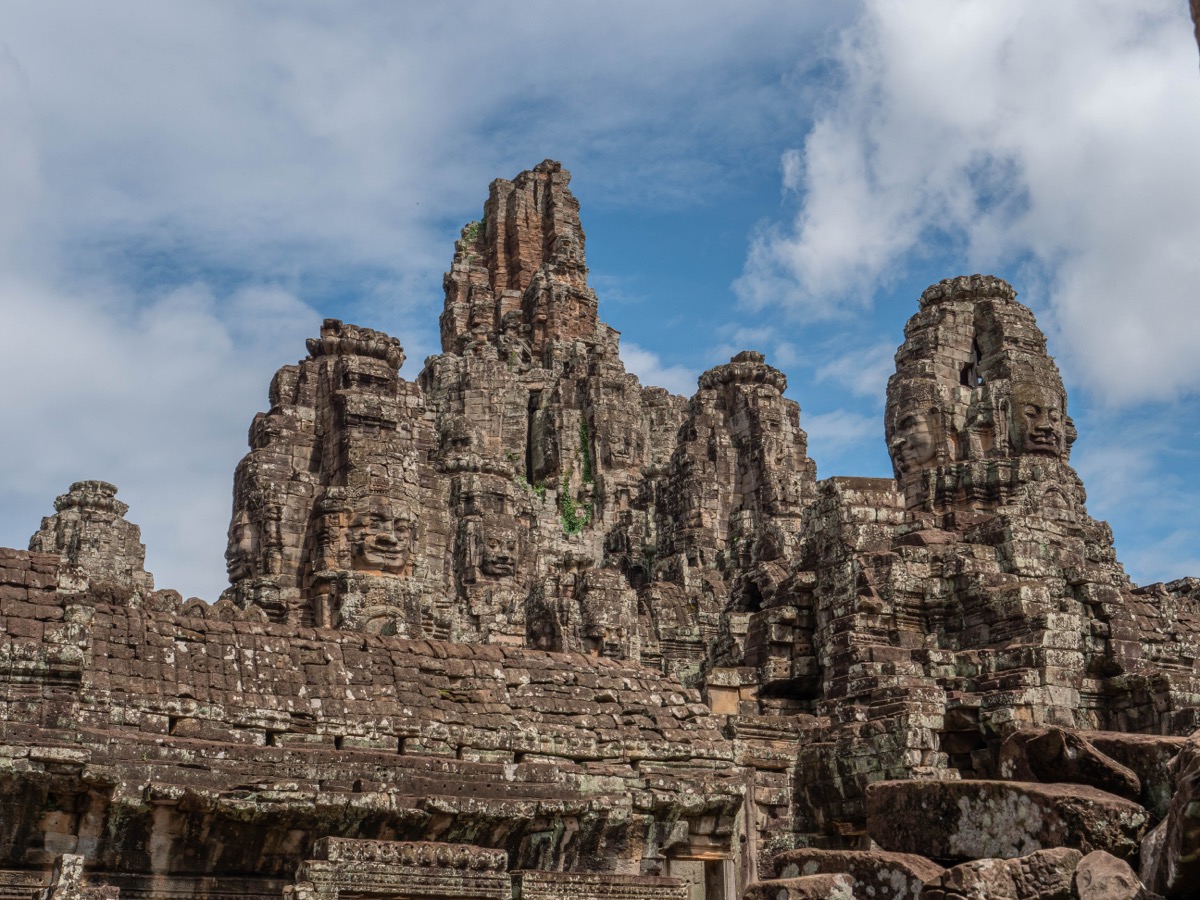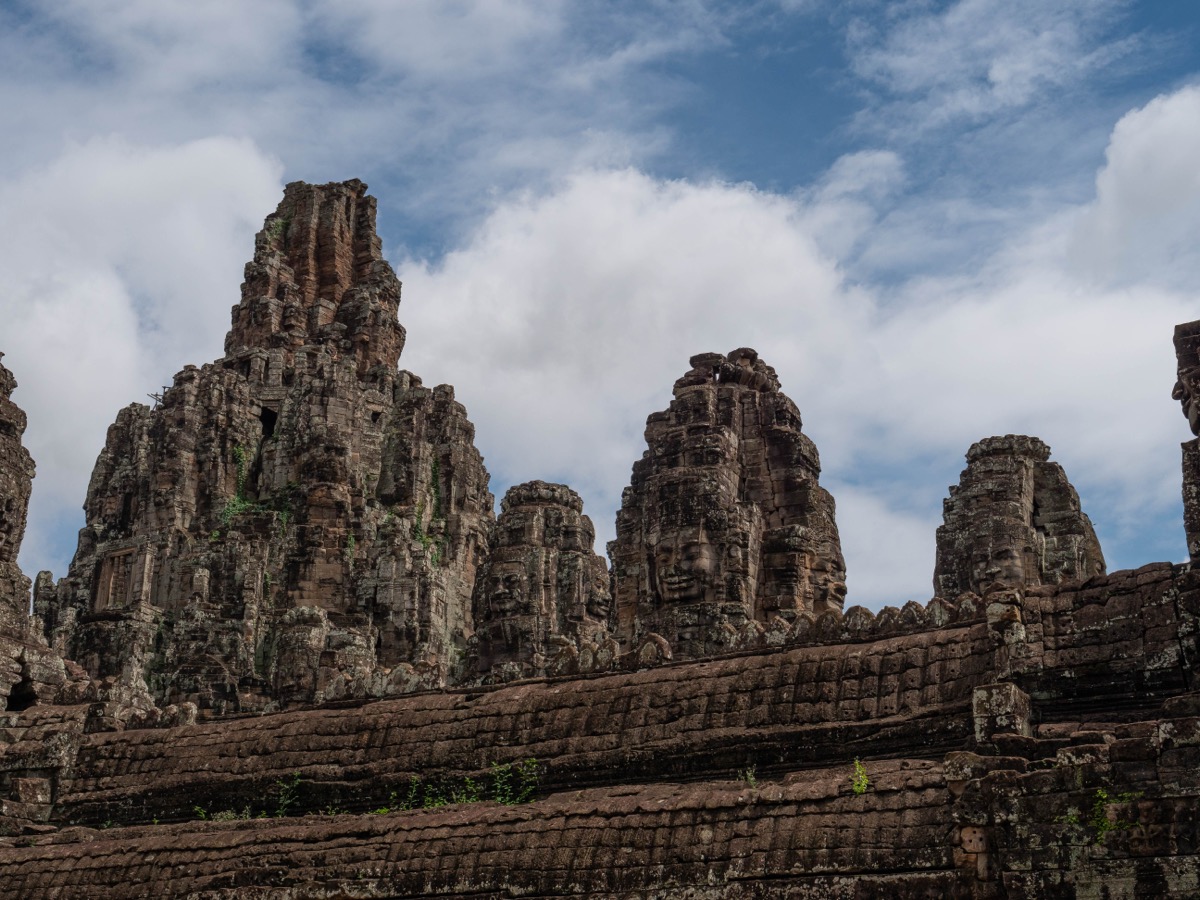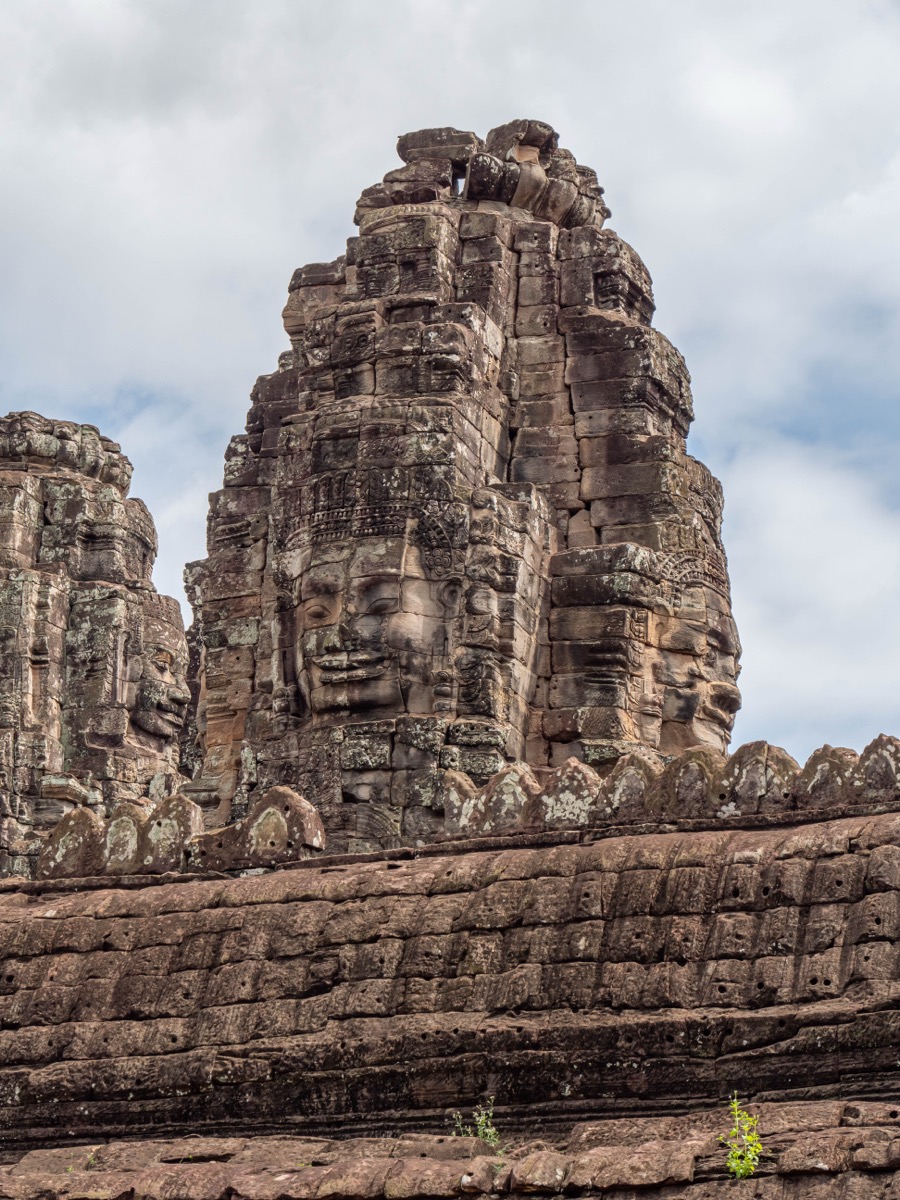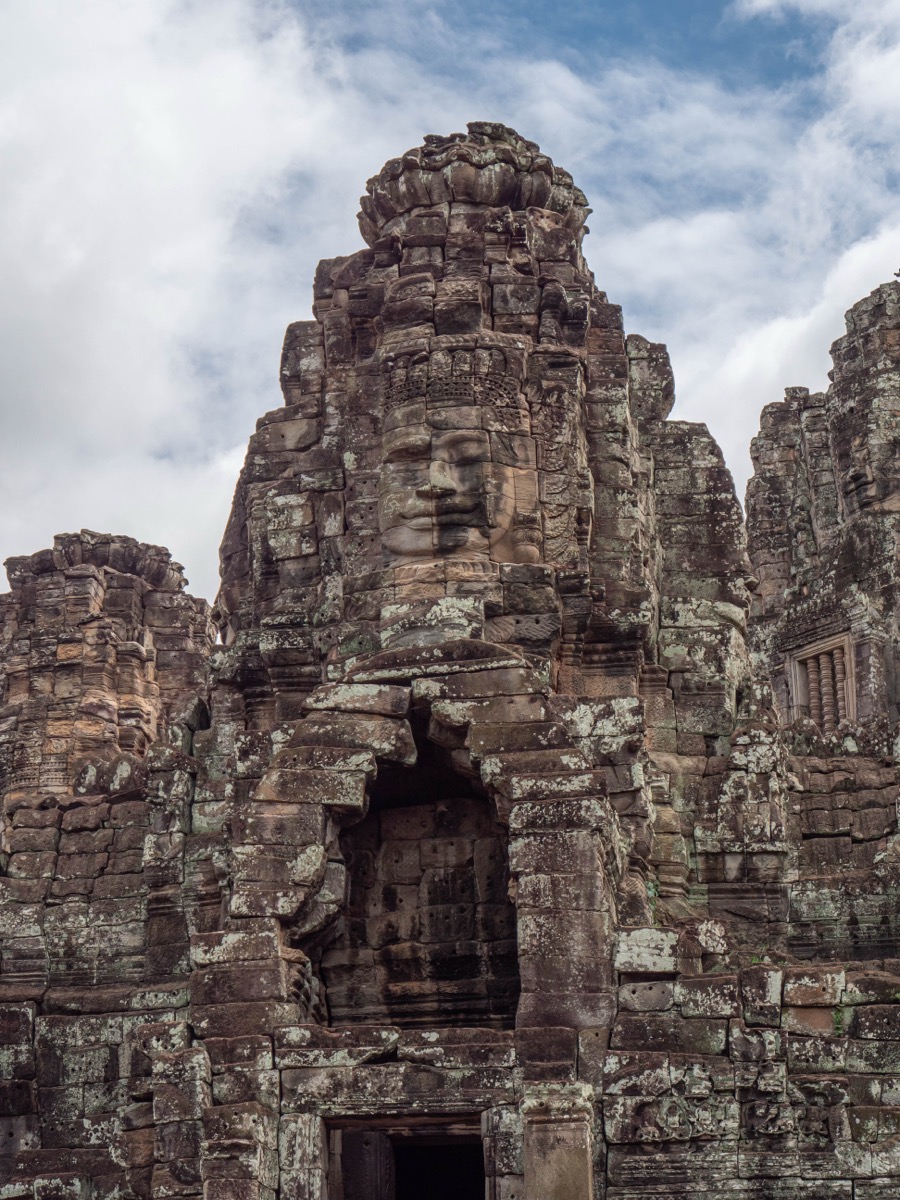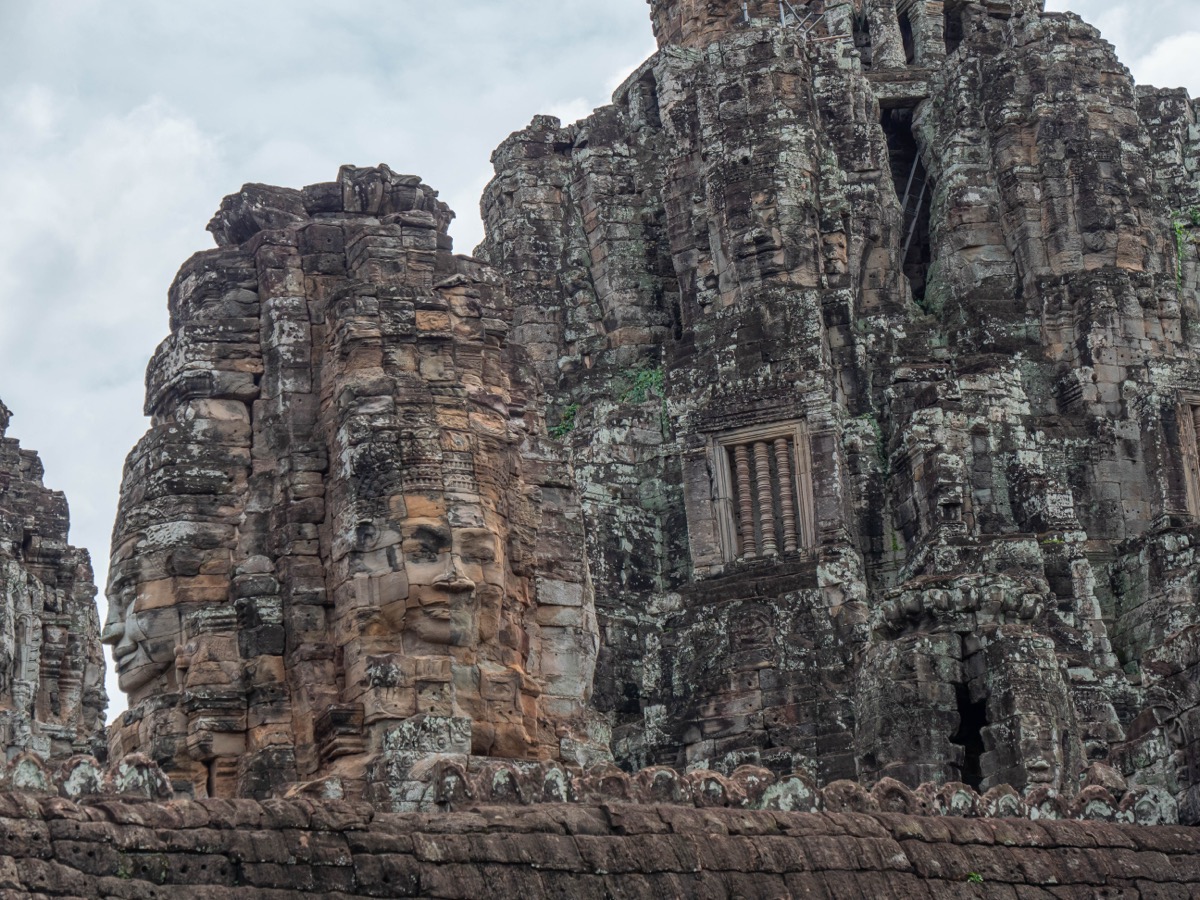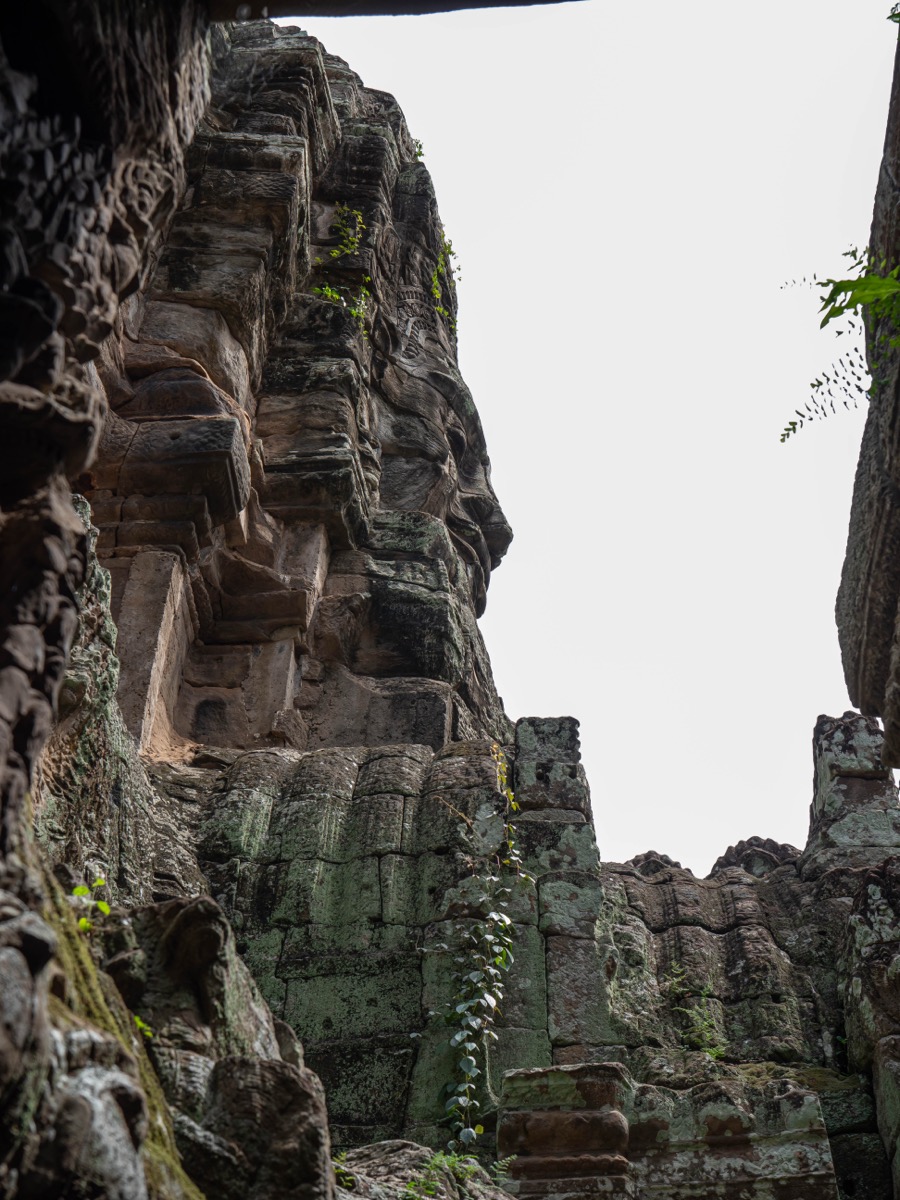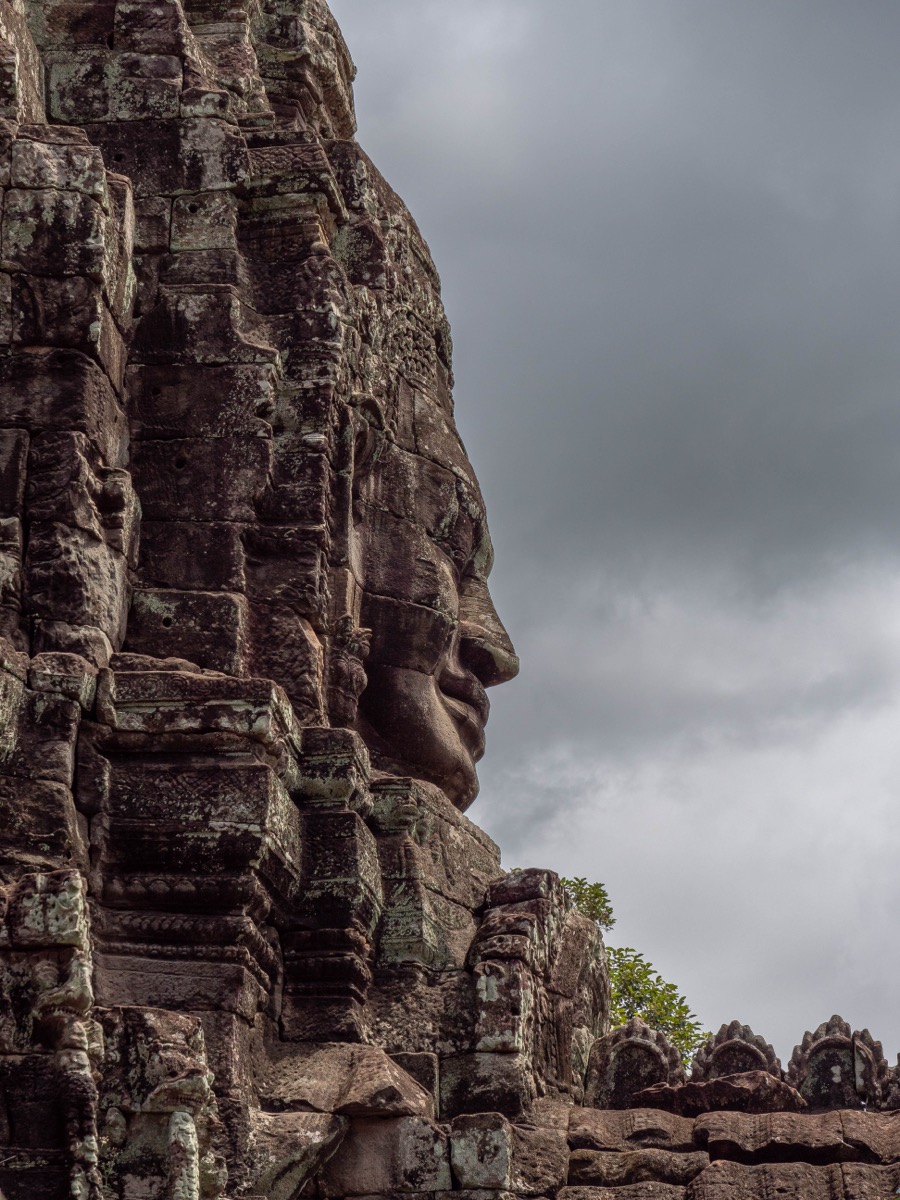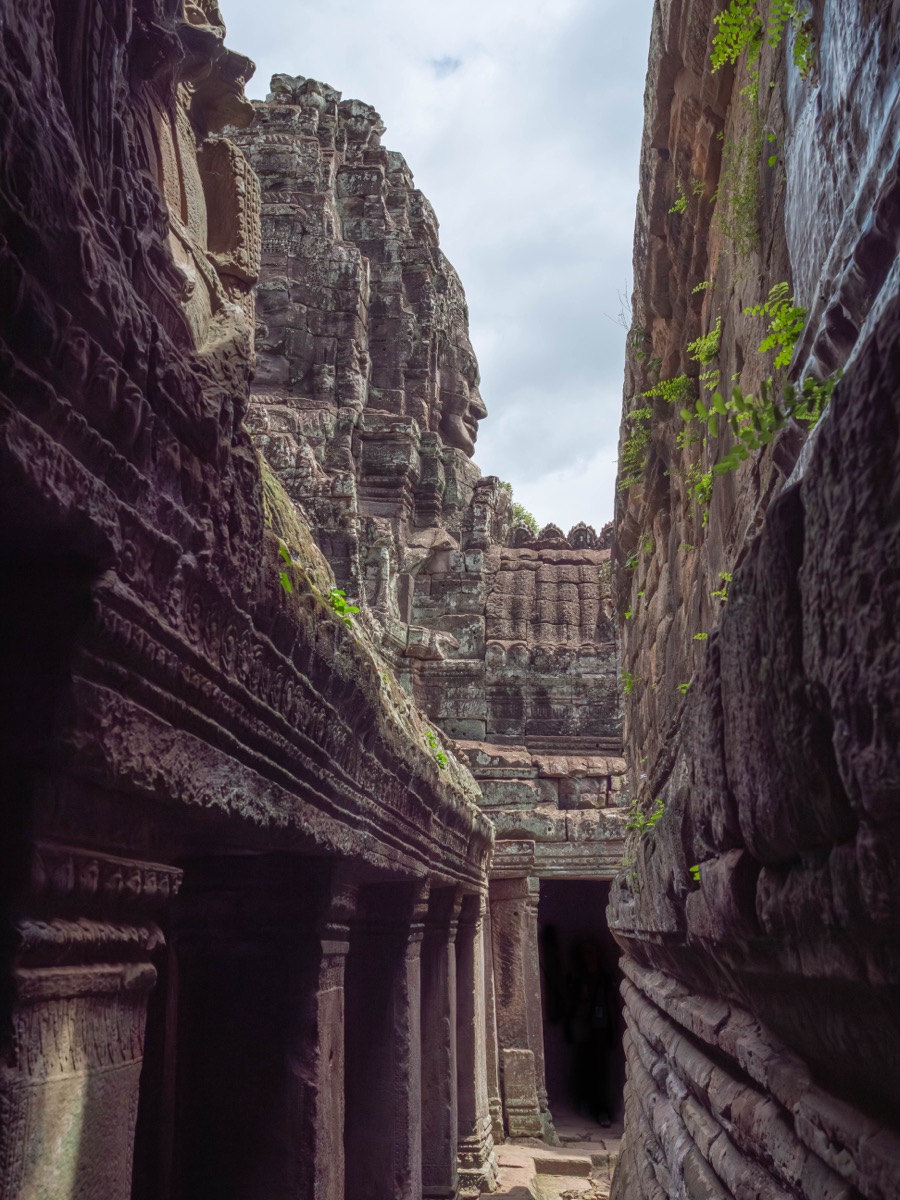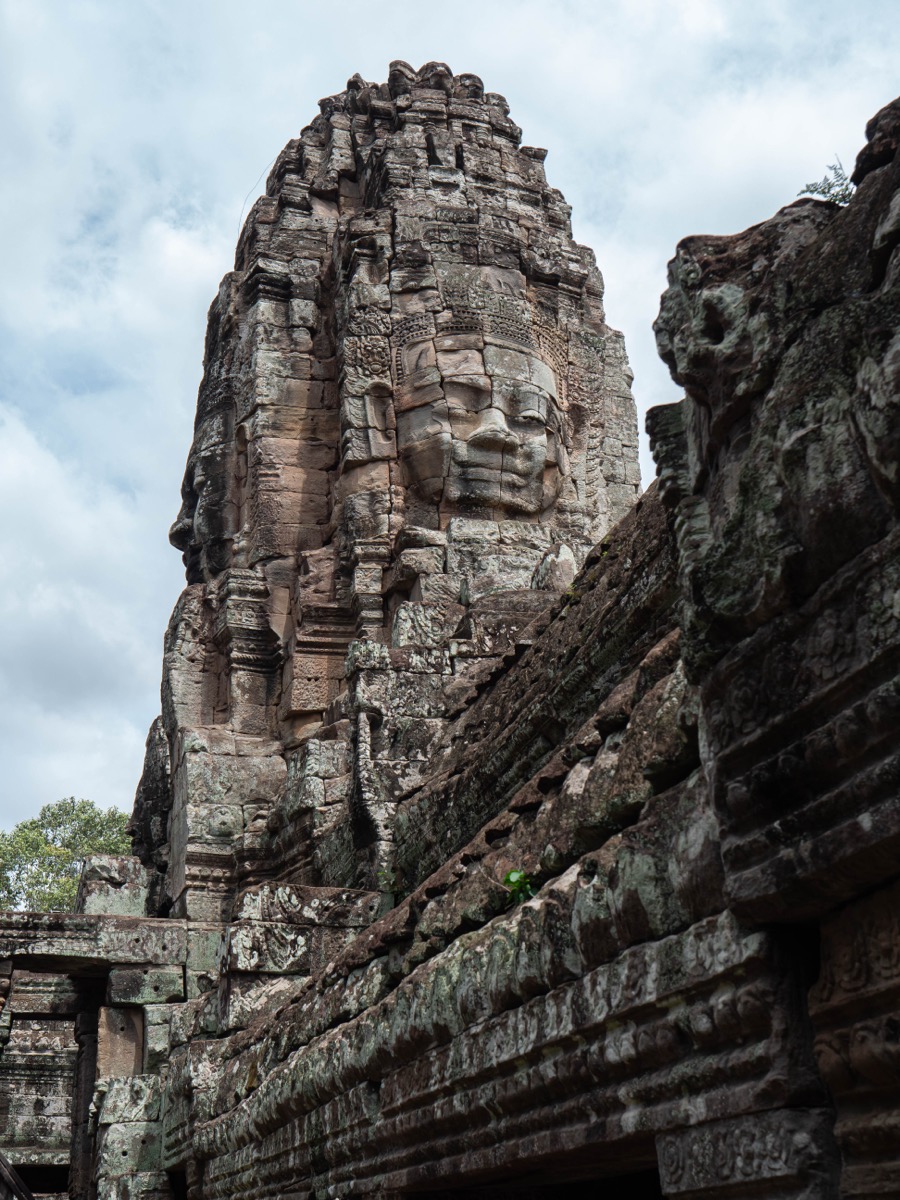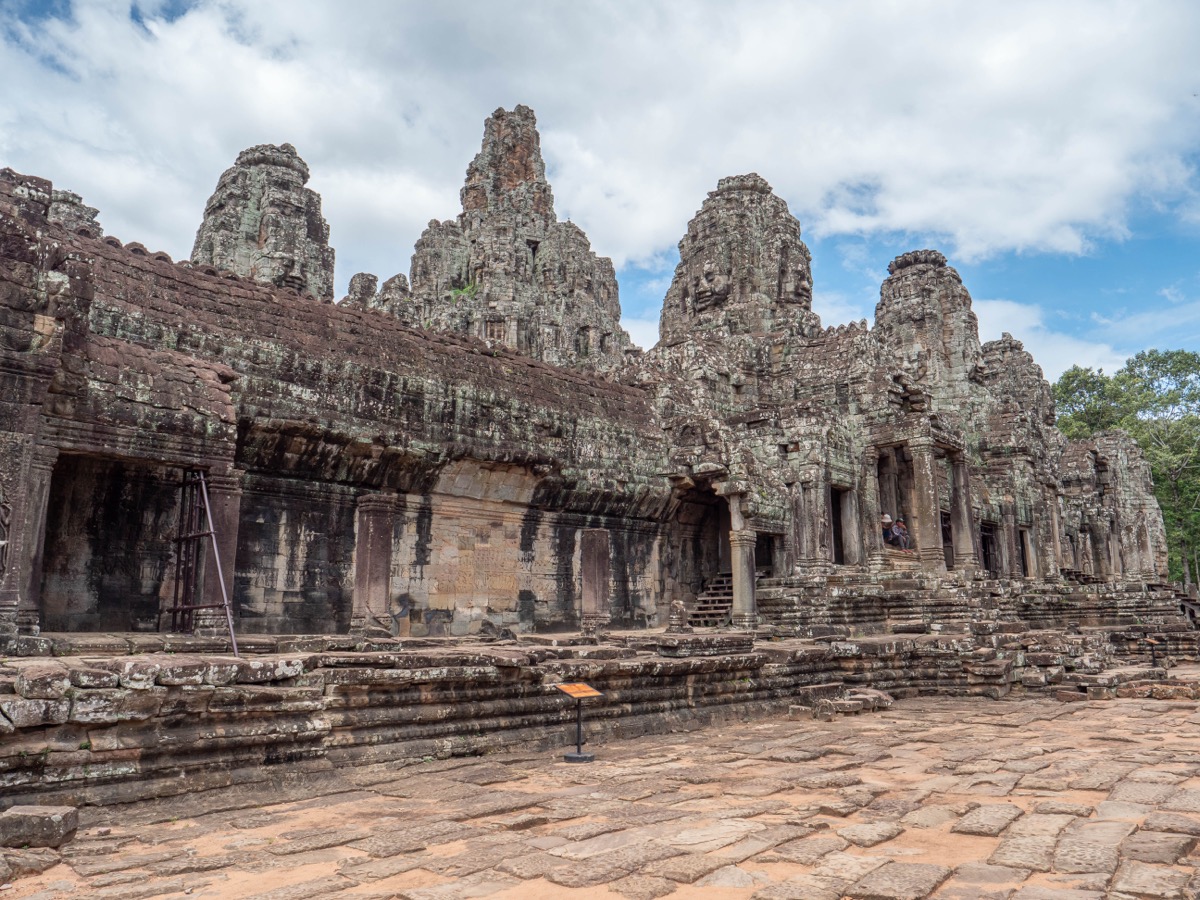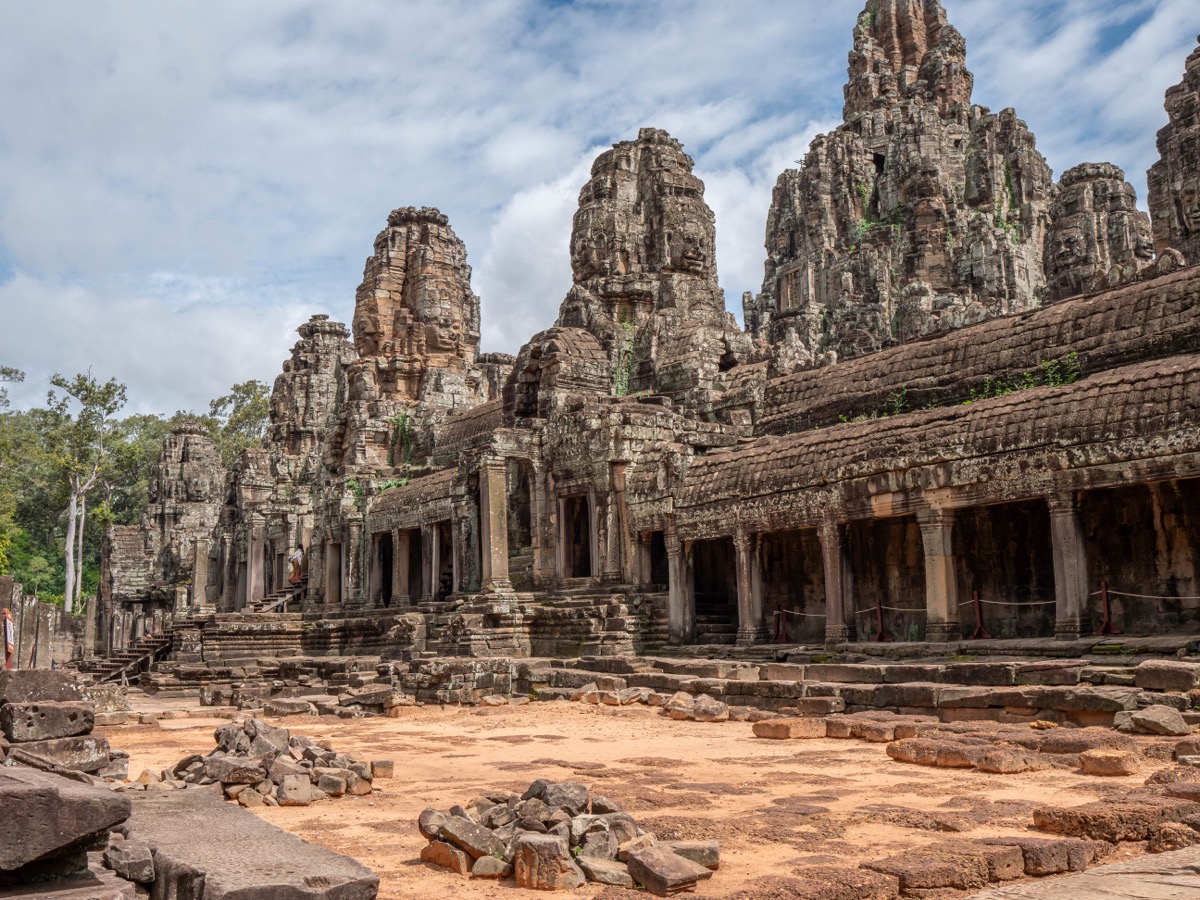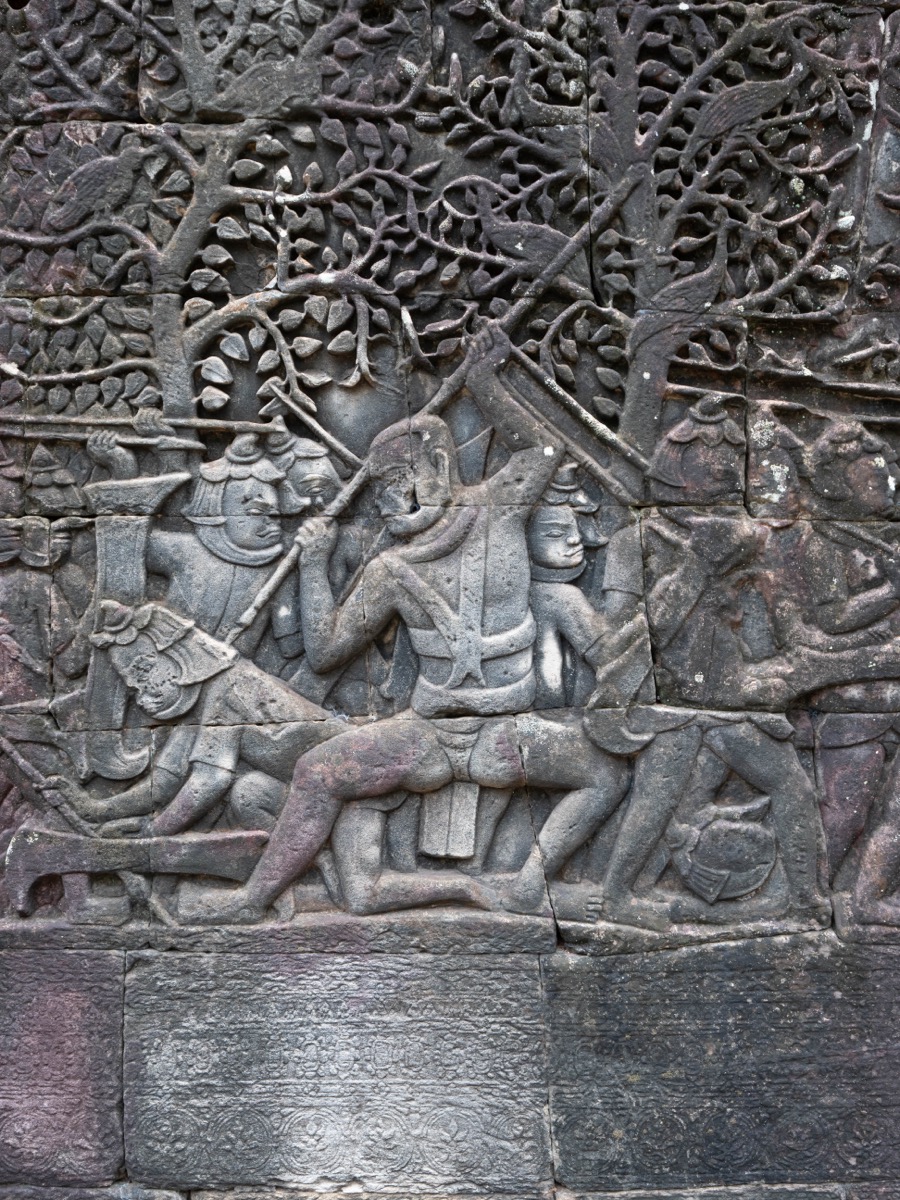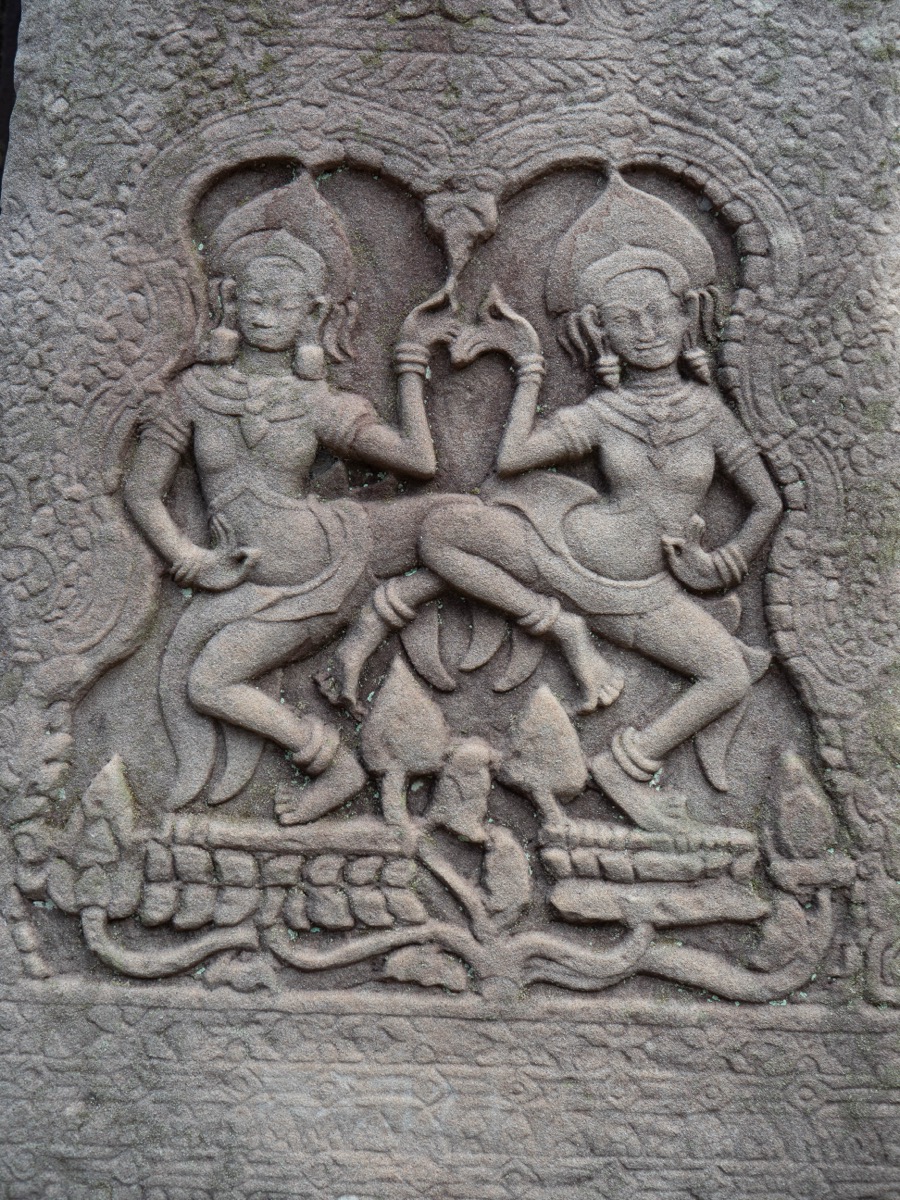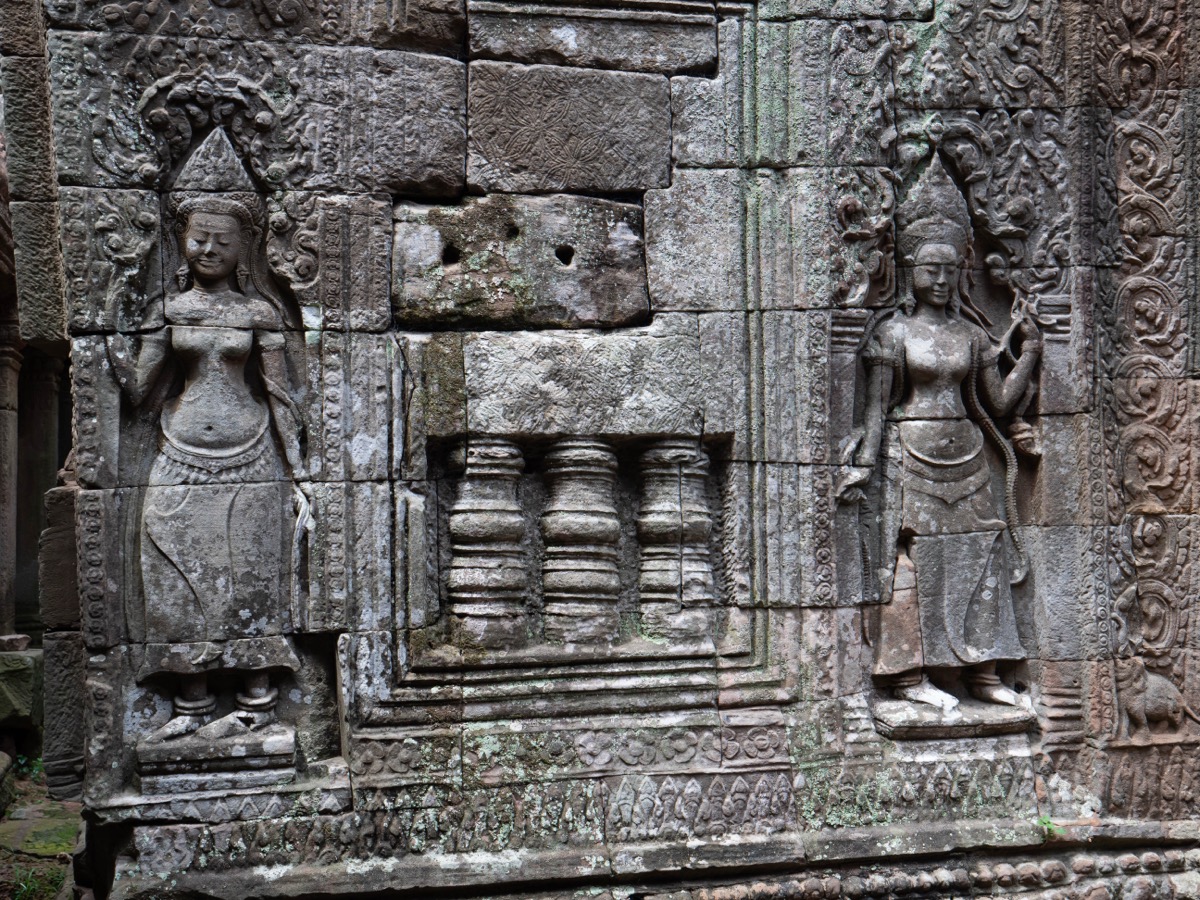The Bayon Temple - បាយ័ន
The Bayon Temple, located at the center of Angkor Thom in Cambodia, is one of the most enigmatic and iconic sites of the ancient Khmer Empire. Built in the 12th century during the reign of King Jayavarman VII, this temple is a unique architectural masterpiece.
What makes it truly remarkable are the countless stone-carved faces that adorn its towers. It is estimated that there are over 200 giant faces, each different, arranged on the temple’s main towers. These faces are believed to represent King Jayavarman VII himself, or a fusion of the king and the bodhisattva Avalokiteshvara.
These mysterious faces—with their enigmatic smiles and benevolent gazes—give the Bayon an atmosphere of magic and mystery. Visitors feel as though they are being watched from all sides, adding to the unique experience of this sacred site.
In addition to its remarkable faces, the Bayon also features exceptional bas-reliefs that depict scenes of daily life, epic battles, historical events, and religious representations. These carvings tell the story of the Khmer Empire and bear witness to the cultural richness of this ancient civilization.
The Bayon is also a Buddhist place of worship, with interior shrines and altars for religious practice. Despite the centuries since its construction, the Bayon Temple remains a site of devotion and spirituality for many Cambodians and visitors.
Visiting the Bayon transports travelers to a world of riddles and wonders, where the past harmoniously blends with the present. It is a must-see destination for anyone wishing to explore Cambodia’s rich cultural heritage and be captivated by the mystical beauty of the Khmer Empire.
The Sacred Heart of Angkor Thom
The Bayon is the central temple of Angkor Thom, the capital founded by Jayavarman VII in the late 12th century. Unlike earlier Hindu temples, the Bayon is a Mahayana Buddhist sanctuary, dedicated to Lokeshvara, the bodhisattva of compassion.
It lies at the exact intersection of the city’s north-south and east-west axes, symbolizing the spiritual and symbolic center of the Khmer Empire.
A Unique Temple in Angkorian Architecture
The Bayon stands out with its circular layout and face towers, breaking away from the traditional square symmetry of temple-mountains.
Key features:
- 54 towers originally, around 30 remain today.
- Each tower bears 4 carved faces facing the cardinal directions.
- Maximum height: 43 meters.
- Three levels:
- Lowest: historical bas-relief gallery.
- Second: interior galleries, secondary sanctuaries.
- Top: central sanctuary surrounded by face towers.
The Faces of the Bayon
These smiling faces, with half-closed eyes, embody transcendent serenity. Their meaning remains debated:
- Representations of Lokeshvara, embodiment of universal compassion.
- Idealized portrait of Jayavarman VII, deified through the bodhisattva.
- Expression of the king’s benevolent watchfulness over the cardinal directions.
This sculptural style has become iconic of late Khmer art.
The Bas-Reliefs: History and Myth
The Bayon’s lower galleries are adorned with over 1,200 meters of bas-reliefs, notable for their realism and vivid storytelling.
Two types of scenes coexist:
- Historical episodes:
- Naval battle against the Chams.
- Daily life: markets, childbirth, games, executions.
- Mythological Hindu scenes:
- Episodes from the Ramayana and Mahabharata.
This blend illustrates the religious transition between Hinduism and Buddhism within the empire.
Religious Symbolism
The Bayon expresses a Buddhist cosmology centered on the king:
- The towers represent the thousand faces of compassion watching over the kingdom.
- The temple embodies a mandala of a balanced universe, with the king at its center.
- The faces’ orientation implies a divine presence in all directions, an omniscient and benevolent power.
History and Transformations
After Jayavarman VII’s death, his successors reverted to Hinduism, then adopted Theravāda Buddhism. The Bayon was altered, modified, then partially abandoned over the centuries.
In the 20th century, it underwent complex restoration efforts led by the École française d’Extrême-Orient, notably using anastylosis.
Visiting the Bayon Today
The Bayon is one of the most visited temples in Angkor:
- Best time: sunrise or sunset, when light sculpts the faces.
- Recommended duration: 1 to 2 hours.
- Plan for quiet time at the summit, to appreciate the alignment of the faces.
- The lower galleries deserve close attention for their rich scenes.
Conclusion
The Bayon is simultaneously a temple, political monument, work of art, and stone mandala. It represents the pinnacle of the synthesis between Buddhist spirituality and royal power, between cosmic symbolism and human history. Visiting the Bayon means immersing yourself in the very soul of Angkor Thom.
Temple Entrance
You can often see Cambodians in traditional dress posing for photographs in front of the Bayon temple entrance. These outfits can be rented at roadside stalls.
